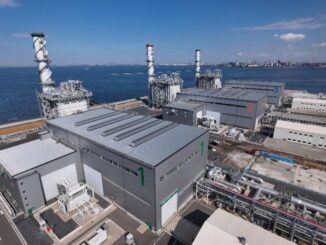
Historical Context: Iran’s Oil Production Under Biden and Trump
Trump Administration (2017–2021): During his first term, President Donald Trump pursued a “maximum pressure” campaign, reimposing sanctions on Iran’s oil sector in 2018 after withdrawing from the Joint Comprehensive Plan of Action (JCPOA). The goal was to drive Iran’s oil exports to zero, depriving the regime of revenue to fund its nuclear program and regional proxies. By early 2020, Iran’s crude oil exports had plummeted to approximately 250,000 barrels per day (bpd), a drastic decline from pre-sanction levels of over 2 million bpd in 2018. The Trump administration’s aggressive enforcement targeted not only Iranian entities but also foreign buyers, shippers, and insurers, significantly disrupting Iran’s oil trade. However, Iran adapted by developing a “shadow fleet” of tankers and relying on clandestine methods like ship-to-ship (STS) transfers and rebranding oil to evade detection.
Biden Administration (2021–2025): Under President Joe Biden, the focus shifted toward reviving the JCPOA, leading to a perceived relaxation of sanctions enforcement. Iran capitalized on this, boosting its oil exports to a six-year high of approximately 1.5 million bpd by September 2024, with 85–90% of shipments destined for China. According to the U.S. Energy Information Administration, Iran’s oil export revenues reached $53 billion in 2023 and $54 billion in 2022, reflecting a significant rebound from the $19 billion in 2020 under Trump. This surge was facilitated by China’s growing appetite for discounted Iranian crude, Tehran’s mastery of sanctions-evading tactics, and Washington’s reluctance to aggressively target Chinese buyers to avoid escalating tensions or spiking global oil prices. Critics, including Republican lawmakers, accused the Biden administration of “maximum deference,” allowing Iran to fund its military and proxies through increased oil revenues.
The latest sanctions, enacted under the Trump administration’s renewed “maximum pressure” campaign, build on measures like the Stop Harboring Iranian Petroleum Act (SHIP Act) and the Iran-China Energy Sanctions Act of 2023, signed into law by Biden in April 2024. These laws target port operators, shipowners, refineries, and Chinese financial institutions involved in Iran’s oil trade, aiming to disrupt the supply chain that sustains Tehran’s exports. Unlike previous sanctions, the SHIP Act mandates the U.S. government to impose sanctions on entities knowingly handling Iranian petroleum, removing some discretionary enforcement flexibility.
In 2025, the U.S. Treasury and State Departments have sanctioned specific Chinese “teapot” refineries, such as Shandong Shouguang Luqing Petrochemical Co., Ltd. and Shandong Shengxing Chemical Co., Ltd., for purchasing billions of dollars’ worth of Iranian crude. Additionally, sanctions have targeted Iran’s “shadow fleet,” with over 30 vessels and entities designated in February 2025 alone for transporting millions of barrels to China. These measures mark an escalation from Biden-era policies, which largely avoided targeting Chinese refineries due to their limited exposure to the U.S. economy.
Enforcement under Trump appears more aggressive, with a focus on disrupting the infrastructure of Iran’s oil trade, including brokers, tanker operators, and storage terminals. For instance, the U.S. has sanctioned Chinese ports like Huaying Huizhou Daya Bay Petrochemical Terminal Storage for handling Iranian crude, a move that complicates China’s ability to dedicate specific terminals for sanctioned oil. The Trump administration has also signaled a willingness to impose secondary sanctions on Chinese banks facilitating Iranian oil purchases, a step Biden avoided to prevent economic retaliation from Beijing. However, analysts caution that targeting Chinese banks could escalate U.S.-China tensions, especially amid ongoing tariff disputes.
Iraq has sought waivers from the U.S. to continue importing Iranian gas, but these are now under scrutiny as the Trump administration pushes for stricter enforcement. The sanctions could force Iraq to accelerate investments in domestic energy infrastructure or seek alternative suppliers, both of which require significant time and capital. In the interim, Iraq risks energy shortages, which could exacerbate political instability and public discontent.
Historically, U.S. sanctions have had mixed success. The Trump administration’s 2018–2020 measures drastically reduced Iran’s oil exports, but they failed to halt them entirely due to Iran’s adaptive strategies, including the use of a shadow fleet and reliance on Chinese buyers. The Biden era demonstrated that lax enforcement allowed Iran to rebuild its export capacity, with oil revenues fueling military spending and regional proxies. According to United Against Nuclear Iran, Iran exported 587 million barrels of oil in 2024, with 91% going to China, underscoring the limitations of sanctions when enforcement is inconsistent.
- Targeting the Shadow Fleet: Iran’s shadow fleet, estimated to include 126 Very Large Crude Carriers (VLCCs) for its China trade, with 57% already sanctioned, is a critical enabler of its oil exports. Russia, similarly, operates a shadow fleet of hundreds of tankers to export oil to China and India. U.S. sanctions have stranded Iranian and Russian oil on tankers, with Iranian floating storage reaching 25 million barrels in early 2025, the highest in over a year. However, the fleet’s size and adaptability—using tactics like transponder spoofing, STS transfers, and forged documentation—make it challenging to fully disrupt.
- China’s Response: China’s role as Iran’s primary oil buyer complicates enforcement. While sanctions on teapot refineries have disrupted operations, forcing some to discharge at alternative ports or halt purchases, China’s state-owned refineries remain largely untouched. Beijing’s strategic interest in securing discounted Iranian crude, coupled with reduced U.S. leverage due to tariff wars, limits the sanctions’ impact.
- Global Energy Markets: Aggressive enforcement risks spiking oil prices, a concern that restrained Biden’s approach. With global oil stockpiles increasing and OPEC+ raising production, the market may absorb some disruptions, but a significant reduction in Iranian exports could still tighten supply, affecting prices and U.S. allies like Iraq.
Tanker Numbers for Iran and Russia
The tanker market has turned “red hot” as sanctions squeeze the shadow fleets of Iran and Russia. For Iran, 126 VLCCs are currently involved in its crude trade to China, with 57% (approximately 72 vessels) under U.S. sanctions. Russia’s shadow fleet is larger, comprising hundreds of aging tankers, though exact numbers vary due to opaque ownership and registration in non-Western jurisdictions. The overlap between Iranian and Russian fleets, with some tankers servicing both markets, complicates enforcement efforts. Sanctions have reduced available vessels, driving up shipping costs—for example, the cost of shipping Russian oil from the Far East to northern China has tripled to $4.5 million since late 2024.






